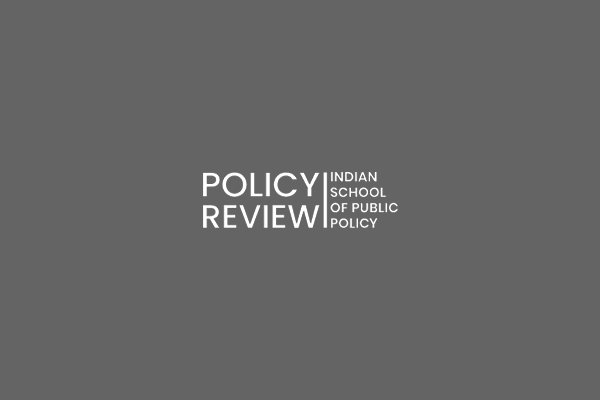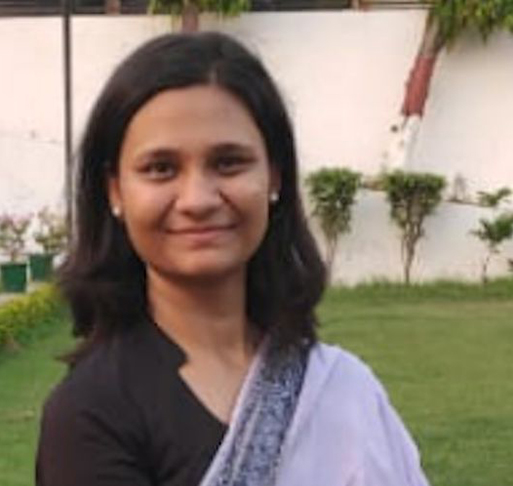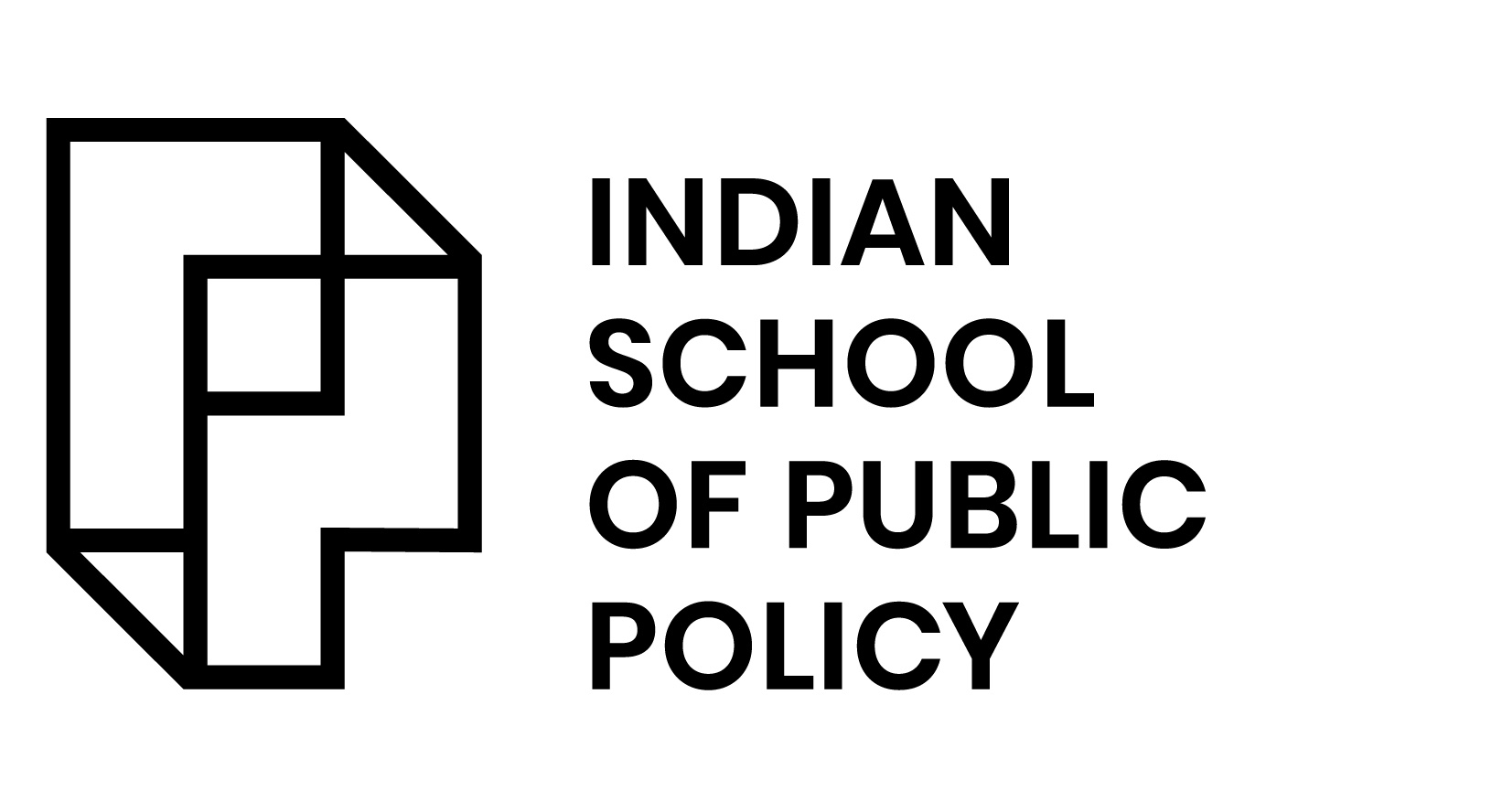
Performance Measurement in Public Administration: A Case Study of Antyodaya Saral, Haryana

Abstract
The use of performance measurement and management, while a fairly standard managerial practice in the private sector, is relatively uncommon in public management. This is especially true for the Indian subcontinent wherein governments traditionally only present themselves for evaluation every election cycle. However, this scenario has begun to change over the last decade, particularly with the introduction of Information and Communication Technology (ICT). The vision of a particular department of government office can guide the design of performance measurement systems that are smart, sophisticated and enable better review both internally amongst administrators and externally, by citizens. This paper uses the case of Antyodaya Saral, Haryana government’s online public service delivery platform, which uses certain key performance indicators to track the performance of departments that are responsible for processing applications by citizens for government-sponsored services and schemes. The paper uses existing literature on performance measurement as well as insights from district and state officials to understand how these KPIs were designed, what purpose they intend to serve and how they can be improved.
Keywords: performance measurement, KPI, public administration, ICT, digital governance
Introduction
As an organisational body, the government is funded by the taxes paid by citizens, run by representatives elected by the citizens and ultimately answerable to the citizens on how it utilises these funds. The government also provides public goods (eg. defence), authorisation documents (eg. driving licenses) and social welfare goods and services (eg. food subsidies), which are typically not provided by the market. This implies that to meet its organisational aims, a government body must effectively utilise tax funds to provide public services. Questions of whether a government body meets its organisational aims and how well it does so constitute government performance evaluation and management. The introduction of information and communication technology (ICT) into the government workspace has accelerated the progress of performance evaluation tools and systems.
This paper aims to discuss prevalent performance measurement methods in public administration and explore innovations in the same. It will specifically look at the use of performance indicators in improving organisational performance, using the case study of Antyodaya Saral (AS), the online public service delivery portal launched by the state government of Haryana. Antyodaya Saral has aggregated service delivery of 37 departments onto a single standardised platform. It has also instituted a performance measurement system for public service delivery across all districts of Haryana. The metrics are geared at inducing a competitive environment for the departments as well as between the districts, by ranking them on the basis of certain parameters. The paper will briefly introduce the existing literature on performance measurement and management and its application. It will then introduce the Antyodaya Saral system, in detail. This will be followed by a note on the methodology used for collecting primary and secondary data. The following section will dive into the interviews conducted with district and state headquarter officials and their perception of the performance metrics, along with its impact on the efficiency of the public service delivery system. The paper will conclude by reflecting on gaps in the performance metrics and recommendations to improve the existing system.
Performance in Public Administration
A performance measurement system develops certain parameters or indicators to track process compliance and assess results, within a certain government unit or sub-unit. It monitors the subject on a daily basis to ensure that these parameters are being fulfilled. This paper will focus on the development of a performance measurement system within Haryana’s public service delivery sector and derive first-hand insights from public administration officials on how they utilise the same.
Why is it important to measure performance? Osborne and Plastrik said, performance measurement “enables officials to hold organizations accountable and to introduce consequences for performance. It helps citizens and customers judge the value that the government creates for them. And it provides managers with the data they need to improve performance.”1 The traditional methods of looking at government performance have mostly taken the following forms:
- Budget auditing/Fiscal health reports
- Parliamentary reviews
- Through media reports
- Through votes by citizens during elections (at various levels of government)
- Through independent, voluntary assessments by civil society organisations
Three out of the five methods listed above are external to the administration and not institutionally embedded. While these methods are able to maintain pressure on a government body, to varying levels of success, they cannot be standardised. Internally, performance measurement has mostly taken the form of budget auditing and a parliamentary review of annual government expenditure. There is a glaring loophole in this method since the expenditure and budget allocations for programmes are mere inputs and do not necessarily indicate the quality of the outcome.
The success of a government programme is often measured in outputs. For instance, the success of the Swacch Bharat Mission was measured through the number of toilets constructed. The number of toilets constructed, however, doesn’t necessarily measure the functionality or usage of these toilets. In other words, the output (toilets constructed) does not equate to the outcome (open-defecation free areas). This nuanced distinction between input (budget), output (construction of toilet) and outcome (behavioural change leading to a defecation free state) is often missing in traditional performance measurement systems.
In the recent past, there has been significant focus on developing performance measurement systems that address concerns left out by these traditional methods. New Public Management (NPM) has brought in a new perspective as it describes the government as an entrepreneurial body which must, in turn, treat citizens as customers. In the context of performance management systems, NPM postulates that the discipline that a capital market imposes on an organisational body (through competition) is missing in the public sector. This absence of discipline translates into a performance or a pace that would be considered sub-par in the market. Decentralisation and dis-aggregation of agencies and departments, contracting out to private agencies and the use of incentivisation techniques are all important elements within the NPM framework.
However, recent scholarship indicates that NPM may not be the only school of thought that focuses on performance evaluation and incentivisation. In their provocatively titled paper, “New Public Management Is Dead—Long Live Digital-Era Governance,” Dunleavy et al. suggest that public management literature has largely ignored the role of ICT.2 They argue that Digital Era Governance (DEG) counters a lot of NPM’s fundamental elements. The most important is reintegrating government as a whole (instead of the disaggregation that NPM emphasises on).
It is interesting to note here that Antyodaya Saral combines elements from both NPM and DEG. It has extensively utilised ICT tools to build a platform that can unify the diverse departments across Haryana. Thus, it fulfils the ‘whole of government’ principle of DEG. In order to ensure that these services are delivered within certain specified timelines, the platform also uses certain key performance indicators (KPIs) on a regular basis. It ranks all departments on the basis of these KPIs, thus, incentivising them to enhance their performance. AS’s case is particularly important in the Indian context. Other than the institutionally established Right to Information and Right to Service Acts, India hasn’t made much progress when it comes to public performance measurement systems. Lant Pritchett famously stated, “Measures of the administrative capacity of the [Indian] state on basics like attendance, performance, and corruption reveal a potentially ‘flailing state’ whose brilliantly formulated policies are disconnected from realities on the ground.”3 However, Devesh Kapur argues, the Indian state delivers better on macroeconomic outcomes wherein the delivery has an inbuilt exit, such as the central or state elections.4 It doesn’t perform as well on macroeconomic outcomes wherein delivery is regular and reliant on local and state capacity. This is where a platform like Antyodaya Saral steps in, which overhauls the public service delivery system by reforming local administration. KPIs ensure that even for services which must be delivered on a regular basis standards do not suffer.
Methodology
The paper is based on both primary and secondary information. Primary information was collected through semi-structured interviews with the district and state leadership as well as a survey of the 2019-20 cohort of the Chief Minister Good Governance Associates (CMGGA). Secondary information is based on a thorough literature review of performance measurement systems in the public sector as well as a study of the performance scores of the chosen districts and AS dashboards. The research methodology has 4 objectives –
- To provide a snapshot of the existing literature on performance measurement systems.
- To understand district and state leadership’s perspective on Antyodaya Saral factors.
- To understand CMGGA’s role in the functioning of SARAL and their perception of the success of performance metrics indicators.
- To make recommendations to improve Antyodaya Saral.
Interviews
Fatehabad, Sonipat, and Rewari districts of Haryana were chosen for this study. They broadly capture three different experiences of the platform, in terms of urbanization, the footfall of the citizens coming to SARAL Kendra, and involvement of district leadership in reviewing the performance metrics of SARAL. This reflects in the districts’ performance. For instance, Sonipat, as a consequence of being an urban district, typically receives a large number of applications and struggles with capacity issues, thus, reducing the RTS score. Since Fatehabad is a rural area, citizens prefer to visit Kendra to submit applications which leads to a higher footfall compared to the other two districts.
| Rewari | Fatehabad | Sonipat | |
| Right to service | |||
| RTS score | 8.9 | 7.7 | 7.3 |
| Total applications received | 1386758 | 1201062 | 1759507 |
| Average customer rating | 3 | 3 | 3 |
| State rank | 1 | 11 | 14 |
| Operationalization | |||
| Total number of Kendra in the district | 4 | 3 | 4 |
| Total footfall/day (all the Kendras) | 249 | 308 | 275 |
| Average waiting time at the Kendra (mins) | 6 | 32 | 31 |
Table 1
*Ticketing score data unavailable at the time of paper being completed
Two kinds of interviews were conducted. For the first kind, 3 departments were chosen and semi-structured interviews were conducted with district heads of all three. The selected departments were: 1. Renewables Department 2. Department of Social Justice and Empowerment and 3. Department of Welfare of Scheduled Caste and Backward Classes. The rationale behind choosing these departments included the unique challenges experienced, types of services delivered, and number of applications received. In particular, the following features stood out for each department. The Department of Welfare of Scheduled Caste and Backward Classes, receive the maximum footfall for the number of applications across all districts. The Department of Renewable Energy has recently been integrated into AS. The performance metrics for the Department of Social Justice and Empowerment have experienced severe fluctuations due to budget constraints and ownership of tasks.
The second type of interviews were qualitative. At the district level, Deputy Commissioners and Sub-Divisional Magistrates were interviewed to understand how Antyodaya Saral has impacted their work. The objective was to understand how the key performance metrics in Antyodaya Saral supported the administration in monitoring, reviewing and implementation of the e-governance platform. At the state level, interviews were conducted with members of the Digital Haryana Cell (which is a body of external consultants who conceptualized, designed and supported the government in Antyodaya Saral) and the leadership at National Information Center (NIC), responsible for technical maintenance of AS. The objective was to understand the motivation and process behind the design of the KPIs. Table 2 outlines the participation of various bureaucratic stakeholders in the implementation of AS.
| Leadership | Setup and operationalization of the Kendra | Conceptualization of the metrics | Coordination with the state team to provide recommendations of the pain points | Review and monitoring of departments for RTS | Review and monitoring of departments for e-ticketing | Designing of the portal | Conceptualizing and managing the state helpline call centre | Management of funds for operationalization and providing services | IEC |
| State nodal Officer | ✓ | ✓ | ✓ | ✓ | ✓ | ✓ | ✓ | ✓ | |
| District Commissioner | ✓ | ✓ | ✓ | ✓ | ✓ | ||||
| Additional Deputy Commissioner | ✓ | ✓ | ✓ | ||||||
| City Magistrate | ✓ | ✓ | ✓ | ✓ | |||||
| Sub-divisional Magistrate | ✓ | ✓ | ✓ | ✓ | ✓ | ||||
| CMGGA | ✓ | ✓ | ✓ | ✓ | ✓ | ✓ | ✓ | ✓ | |
| DHC | ✓ | ✓ | ✓ | ✓ | ✓ | ✓ | ✓ | ✓ | |
| NIC | ✓ | ✓ | ✓ | ||||||
| DSWO | ✓ | ✓ | ✓ | ✓ | |||||
| DWO | ✓ | ✓ | ✓ | ✓ | ✓ | ||||
| Project Officer | ✓ | ✓ | ✓ | ✓ |
Table 2
Antyodaya Saral: Structure, Challenges and Design
Delivery of publicly provided schemes and services is a frequent mode of interaction between citizens and state machinery, particularly local administration. This process requires mammoth coordination across departments. In India, citizens have traditionally faced the following issues while applying for services or schemes:
- Scarcely available information: Information regarding application processes, eligibility criteria and documents required is usually made available through government circulars. However, these circulars are traditionally available on the department website or at the department office. A citizen would have to make concerted efforts in order to obtain this information and at some cost (of time or money).
- No tracking process: Once a citizen applied for a specific service/scheme, there was no way to track the status of their application or get an estimated time of processing. The introduction of Right to Service legislation across several Indian states has changed this scenario by imposing specific timelines that all government departments must adhere to when processing applications.
- Multiple visits: Due to the above two factors, a citizen would have to make repeated visits to department offices.
- Corruption: Due to the large physical processing of files, administrative officers were able to exercise a significant degree of discretion when it came to passing applications. This allowed scope for bribery and corruption which further disadvantaged the citizens.
- Absence of a streamlines grievance redressal system: The citizen grievance redressal mechanism consisted of 12 disparate helplines running across the state with no streamlined monitoring mechanism.
Administrative officers, from their end, would usually experience the following problems:
- Tracking of files: Since a very large quantum of files were physically processed, different verticals across different departments experience difficulty in keeping track of the same. The internet enabled different departments to have individual websites for accepting applications. However, this process still required communication between departments.
- State capacity: Given the population of an average Indian state (Haryana’s population is an estimated 2.8 million), as long as files were processed physically and without coordinated effort between departments, administrative capacity would continue to be strained and overburdened. This is a major reason why a simple application such as that for a driving license, would sometimes take several months to be processed.
- Duplication of efforts: Due to the absence of a single, unified application process, officers would spend a significant chunk of their time reconciling multiple applications/documents of a single applicant, coming in from multiple locations/departments.
To address these issues in the public service delivery system, Antyodaya Saral was launched in Haryana in 2017. The Chief Minister of Haryana created a Project Management Unit (PMU) at the CMO which constituted the Department of IT, NIC and Digital Haryana Cell (DHC), responsible for developing a single platform where citizens could avail all government services and schemes. The idea was to build a paperless and cashless service delivery mechanism which leaves no room for arbitrary decision making by bureaucrats and provides a seamless user experience for citizens. The initiative was named Antyodaya Saral because the term means inclusive and simple in Hindi.
Once the goals of AS had been established (to aim for transparency, efficiency and accountability), the first step was to define appropriate measurement indicators to capture these three factors. Well-designed metrics would quantify the objectives of AS and demonstrate the value of not just the public service availed but also of the platform itself. It would also shift the focus of each of these departments from merely inputs, towards outputs and eventually the intended outcomes. For Antyodaya Saral, three stakeholders were responsible for defining, designing and implementing the metrics 1. Digital Haryana Cell which was composed of a team of consultants from Samagra (a private consulting firm) 2. National Informatics Centre (NIC), Haryana 3. Chief Ministers Good Governance Associates (CMGGA) team.
Interviews with the stakeholders indicated that the broader objective of the metrics was to induce competition among the administrative stakeholders, by quantifying the key performance indicators. A similar strategy has been used for some other Indian programmes such as the Aspirational Districts Programme and the Swachh Bharat Mission. The metrics are designed to ensure that the service delivery process is standard across the state, measured against set benchmarks. To ensure a thorough understanding of the metrics by all the officials and their smooth implementation, several capacity building workshops were conducted at the state, district and department level. To account for variations across districts, suggestions were sought from all district-level administrators while designing the metrics.
While AS is primarily an online portal, it is supplemented by physical touchpoints which give citizens the option of applying on their own or with assistance from local operators. Table 4 shows the breakup of the various touchpoints used by citizens and administrative officials:
| Touchpoints | Front-end | Back-end | ||
| Citizen | Online portal (self-operated) | Antyodaya Saral portal | Processing systems for departments | Department |
| Saral Kendra (district level) | e-token portal | Ticketing systems | ||
| Antyodaya Saral Kendra (subdivision/tehsil level) | Knowledge management system | Right to Service Dashboard | ||
| Atal Seva Kendra (village/ward level) | Antyodaya Saral helpline(1800-2000-023) | Citizen feedback dashboard |
Table 4
To expand transparency within the bureaucracy, the team behind AS designed three metrics: operationalisation score, RTS score and ticketing score. Following is the description of each metric along with observations and insights, recorded through the interviews:
Operationalization/Kendra Score
In terms of physical touchpoints, Antyodaya Saral consists of more than 115 Kendras which offer more than 500 schemes and services across 37 departments. Every district headquarters consists of a Saral Kendra which delivers all the government services and an Antyodaya Kendra, which delivers all government schemes. At the sub-division level, all the schemes and services are available at a physical touchpoint called Antyodaya Saral Kendra. At the village level, Atal Seva Kendra has been set up. Sub-Divisional Magistrates are responsible for the Saral Kendra and Antyodaya Saral Kendras of their sub-division, while Antyodaya Kendra is the responsibility of the District Welfare Officer of the district.
| Delivery of schemes | Delivery of services | |
| 22 at district HQ | Antyodaya Kendra | Saral Kendra |
| 51 at subdivisions | Antyodaya Saral Kendra | |
| 20 at tehsil level | Antyodaya Saral Kendra | |
| 6000+ at village level | Atal Seva Kendra (Common Service Center) | |
Since multiple such physical touchpoints exist across the state, 9 metrics were developed to ensure that all touchpoints adhere to uniform standards of infrastructure and service provision. These are known as operationalisation metrics. The operationalization metrics aim to capture the following:
1. Best-in-class infrastructure
2. Availability of all the 600+ schemes and services across 37 departments, through the AS portal. To ensure that citizens are able to access information regarding these schemes and services, a Knowledge Management System has been constituted in consultation with the department which mentions the documents required and timeline of the services.
3. Help-desk which addresses citizen queries, provides tokens and ensures proper crowd management.
4. Single window to process all the schemes and services.
5. Regular surveillance and security mechanisms including CCTV installation and the use of security guards to discourage the presence of informal, intermediary agents.
7. Citizen feedback: Interactive Voice Response System (IVRS) calls are made to the citizens to enquire about their experience at the Kendras.
The Kendras were constructed with the aim of providing a one-stop destination for the citizens to process their application from beginning to end. The Kendra score is what ensures the maintenance of the Kendras such that citizens are able to take full advantage of it. A comprehensive rank is released at the state level where all the 7 aforementioned factors are accounted for, to rate the Kendras out of 10. Chief Minister’s Good Governance Associates (CMGGA) play a crucial role in documenting the progress in the operationalization of the Kendras through monthly visits. The Digital Haryana Cell, at the state level, is responsible for calculating the operationalization score.
This particular KPI is dynamic in nature. At the inception, these metrics mostly captured infrastructure requirements such as the availability of tech equipment, CCTV etc. Between 2018-19, the focus shifted to uplifting the quality of citizen experience. Activities included mapping the Kendras to Google Maps, presence of gender distinct washrooms etc. Post the onset of the pandemic, prioritization of the sub-parameters have changed again as it focuses on the presence of sanitisers, social distancing norms etc. However, three aspects have been given special consideration while designing and implementing the operationalization metrics 1. All the schemes and services should be available in all the Kendras 2. Accountability mechanisms like CCTV cameras and minimal department interference were ensured to check corruption 3. Waiting time of a citizen in Kendra should be no more than 30 minutes. These developments in the parameters are also influenced by citizen feedback which is taken through IVRS calls. Each Kendra receives a score at the end of the month. The Kendras are then ranked on the basis of these scores and these rankings are made public across the state, in order to incentivize the Kendras to improve their performance.
Figure 1
RTS (Right to Service) score
RTS is the Haryana government’s effort to legally enshrine the right of a citizen to receive a certain public service within a specified timeline. RTS legislation currently exists in twenty-two states in India and has been a landmark move towards improving the citizen experience with public services. The AS portal is able to capture information on how many applications are processed within RTS timelines, and should they fail, what is the quantum of the delay. This is represented through the RTS score wherein all the departments are weighed and ranked against a rationalized formula.
RTS Score = 0.7* % of applications under process within RTS + 0.3 * % of applications completed within RTS
Based on this information, an Antyodaya Saral RTS dashboard has been created which is accessible to both district and state-level officials and helps increase transparency at both levels. This dashboard is utilised by department heads, Deputy Commissioner and Sub-Divisional Magistrates for the purpose of regular reviews. The RTS timeline and consequent score not only improve transparency for the administrators but also for the citizens. Applicants can use their application ID to track the status of the application, in order to find the expected time of service delivery. Applicants also receive an SMS on their registered mobile number regarding the status of the application. This saves the applicant multiple visits to the Kendra, which was a norm prior to the existence of the platform. The RTS score on AS was designed in consultation with each department.
Ticketing
Antyodaya Saral also consists of a citizen grievances redressal platform. A citizen can register a complaint by dialling a state toll-free number (1800-2000-023). A citizen’s complaint is called a ticket which is reflected online on the concerned department’s portal. The E-ticketing dashboard is an integrated platform of all the complaints, queries, and requests registered on the SARAL helpline (Toll-free) number for each district. The tickets are further bifurcated into critical (processing time is 7 days) and non-critical (processing time is 10 days). Like the RTS, designated timelines have been drawn up for resolving the tickets. These timelines are referred to as Service Level Progress (SLA). Departments are required to effectively respond to the grievances of the citizens received through the portal within the designated SLA. Similar to the RTS, a dashboard has been created to capture information on the SLA and is used for review at the district and state levels. The following is how the ticketing score is calculated:
E-Ticketing Score = 0.7 % of Unresolved tickets within SLA +0.3 * % of Resolved tickets within SLA
The formula for both the metrics is to incentivize the better-performing districts and departments who resolve the applications or grievances within time and is given as follows: Ticketing, on the other hand, provides an understanding on what is missing in the existing system from the citizen’s perspective. The dashboard for all the three metrics, in particular, has ensured that review meetings can take place at the district and the state level which has led to greater transparency and accountability.
Once the metrics were decided, enablers were designed for them, in order to ensure smooth implementation. Details of all the available schemes and services were also made accessible to the citizens through the Knowledgement Management System (KMS). Using the KMS document available on the Antyodaya Saral website, a citizen has the flexibility to apply for a service or scheme either through the Kendra or the Antyodaya Saral Portal. Both district and state-level leadership are able to review the performance of any department or district at any point in time, through the dashboards. However, these metrics and enablers are consistently evolving, based on feedback by citizens and officials. Earlier, the focus was on the absorption of the metrics and formulae by everyone in the system. Now that this goal has been achieved, a move can be made towards evolving the measurement tools themselves.
KPI Goals: Transparency and Accountability
Referring back to the question posed earlier when district and state officials were asked what the purpose of these specific metrics was, the unanimous answer was: to achieve the twin goals of transparency and accountability.
Accountability
Romzek and Dubnick have defined accountability as “the means by which public agencies and their workers manage the diverse expectations generated within and outside the organisation.”5 As such, Antyodaya Saral aims at achieving 2 kinds of accountability: internal and external. The external accountability lies with citizens who are equipped with the Right to Service Act. In this case, the onus is on the platform to ensure that all services are provided within stipulated timelines. The RTS score is the KPI which holds the platform accountable for this. Citizens are also able to use the grievance redressal system and the accountability for this is captured through the ticketing score. However, it must be noted here that in order for citizens to be able to use either of these tools, they must be given easy access to information regarding their rights and what they are owed. The Knowledge Management System (KMS) is the database which serves this purpose. A citizen can search for the service they are trying to avail, find the list of documents required and the fee that is to be charged for that service. With better information access a citizen can hold any government employee responsible for any malpractice. The citizen also has the option of using the ‘Antyodaya Saral app’ which gives them access to a citizen dashboard which is similar to the data used by the district and the state leadership for reviews and monitoring. In addition, citizen feedback is also taken through IVRS calls.
The second kind of accountability is internal i.e. administrative accountability in Antyodaya Saral. Three dashboards for ticketing, RTS and waiting time have been developed to provide visibility in the performance of officers, clerks and operators alike. It was observed in the interviews that amongst the three KPIs, RTS was rated as the most important parameter with the best dashboard by the district leadership. City Magistrate, Fatehabad who is Secretary of Digital Information Technological Society and nodal officer for SARAL Kendra Fatehabad, mentioned that “Though RTS act was already in place since 2014, there was no mechanism to check the implementation of the said Act. The RTS Dashboard has helped the district administration in bringing out the true performance of departments by analyzing the various pendency reports using the dashboard. The most prominent feature of this dashboard has been that it analyses the data and shows the pendency of each application and the stage of an application at which it is pending. This brings out transparency both at the district level and to the citizens. As the citizens now know at what stage the application is pending and the district leadership also gets the visibility as in which officers are performing well and which officers need more motivation to perform better. The dashboard has also helped district administration in getting acquainted with issues specific to the department which usually comes out during reviews which weren’t the case earlier”.
Before AS, only quarterly reviews were possible by the SDMs and DCs. It was daunting for the officers to receive data on how many applications have been processed in the district due to the absence of a set system for processing applications. Antyodaya Saral has enabled the processing and accessibility of data for government officials, in a manner that makes regular and detailed reviews and monitoring possible. Interviews with the district leadership indicate that daily monitoring is done in all the three districts through Whatsapp groups. This has also streamlined the frequency of review and monitoring across the state. Reviews are conducted monthly at the state level while the frequency is higher at the district level. District leadership unanimously indicated that state-level monthly reviews which hold them accountable for district review help them to ensure that they work constantly on Antyodaya Saral. However, some aspects discussed in the review such as technical problems in the portal or constrained funding from the state government which impede timely delivery of services, are not the responsibility of the district administration.
| Monthly | Weekly | Daily | |
| Nodal Officer of Antyodaya Saral at the state level | Fatehabad, Rewari, Sonipat | ||
| Deputy Commissioner | Fatehabad, Sonipat | Rewari | |
| Sub-Divisional Magistrates | Fatehabad, Sonipat, Rewari | ||
| Department heads | Fatehabad, Sonipat, Rewari |
Table 6
Transparency
Transparency is defined generally as “the extent to which a (public) organization allows external actors to monitor and assess its internal workings and performance.” While Saral promotes transparency for its citizens through KMS, app, IVRS and SMS, it also promotes transparency within the administrative setup. During district leadership interviews, multiple respondents confirmed the same. For example, earlier “to identify a particular application and where it has been withheld, used to take hours, days and sometimes months,” as per a DHoD. With the onset of SARAL, any officer can view the status for an application, the time taken to process the file and the exact office at which the file is pending. This visibility is available to everyone within and outside the system. SDM Rewari mentioned that ‘Antyodaya Saral ensures transparency at all levels of processing of the schemes and services. When a citizen enters the Kendra, double screens ensure that they are aware of how their application is to be filled. They are given a tracking id which enables tracking of the file till processing is complete. Dashboards play a crucial role in ensuring transparency in the system as any district-level officer can check the dashboards to understand the progress of the department very quickly. This increasing visibility created a pathway for incentives. For instance, Rewari district leadership used the operator’s dashboard to award the monthly ‘Operator of the Month’ award.
In addition, interviews indicated that with increased transparency, cases for corruption in public service delivery have decreased. With increased access to information and less cumbersome processes in availing the government services and schemes, there is less scope for bribery and rent-seeking.
Scope for improvement
Following are the areas wherein the AS KPIs can improve:
- There continue to exist independent portals such as those belonging to the transport department (Saarthi) or e-Disha. There is a need to integrate all such portals with AS. Best practices of these portals like mentioning the reasons for pendency/rejection can be incorporated. This would help citizens avoid errors that lead to pendency/rejection. External factors like budget constraints or dependency on third parties that lead to the pendency of applications should be treated under separate heads and not be cultivated under the same timelines. For example, in case of a driving license application, unless the citizen appears for the physical driving test the application cannot be processed by the department. Even if the citizen fails to appear for the test, the application is shown pending at department level and this leads to lowering the overall performance of the department. Such applications should be removed from the ambit of RTS and should be shown pending at third parties and should not be a reflection of the department’s poor performance. A complete integration will make AS the one-stop platform that it intends to be.
- The KPIs focus on completion of processes within certain timelines but do not incentivize good performance. This means that for those districts/departments that rise to the top of the rankings, other than the recognition of that rank, they do not receive any additional award. In fact, they are pressured to continue to maintain that rank. Some sort of an incentive mechanism be it monetary or otherwise, can be devices to actively incentivise districts/departments to improve their rankings.
- The KPIs are presently fairly standardised across districts and departments. There is a need to account for variations across these units. For instance, certain departments such as the Department of Social Justice and Welfare depend on funding/assistance from other government branches to complete their tasks. This kind of dependence is not accounted for, should they fail to adhere to RTS timelines and achieve a poor score. Similarly, variations in population and demographics need to be accounted for when calculating the KPIs to ensure a fair comparison.
- Technical glitches continue to hinder the performance of certain departments as websites often remain dysfunctional. Regular technical check-ups must be scheduled to avoid the same.
Conclusion
AS has achieved a landmark in performance measurement in Indian public administration by instituting dynamic KPIs, keeping bureaucrats in check. It is important that the KPIs be tied to some incentive and not attempt to be an incentive. In the absence of active incentives and scoring at the bottom, departments remain at average levels w.r.t rankings. Since a position at the top or the bottom will imply pressure from higher officials and not much else. However, given that these KPIs are a completely novel and relatively recent exercise, they continue to evolve. It is important that the state administration does not lose sight of the vision and mission of Antyodaya Saral as this process happens. The KPIs must continue to align themselves with the same and effectively enhance transparency and accountability.
References:
- Osborne, D. & Plastrik, P. (2000) The Reinventors Fieldbook: Tools for Transforming Your Government.
- Dunleavy, P., Margetts, H., Bastow, S. & Tinkler, J. (2005)New Public Management Is Dead—Long Live Digital-Era Governance. Journal of Public Administration Research and Theory. Vol. 16. Pg. 467–494
- Pritchett, L. (2009) A Review of Edward Luce’s ‘In Spite of the Gods: The Strange Rise of Modern India. Journal of Economic Literature 47 (3): Pg. 771–80
- Kapur, D. (2020) Why Does the Indian State Both Fail and Succeed?. The Journal of Economic Perspectives, Vol. 34, No. 1. Pg. 31-54
- Romzek, B. & Dubnick, M. (1987). Accountability in the public sector: Lessons from the Challenger tragedy. Public Administration Review, 47, Pg. 227-238
The views expressed in the post are those of the author and in no way reflect those of the ISPP Policy Review or the Indian School of Public Policy.

Devyanshi Dubey
Devyanshi has been working in the development space for the past 5 years, gaining experience across various sectors, including education, women’s safety, and government-to-citizen service delivery. She spent 3 years working on policy analysis, implementation, and impact assessment with the Government of Haryana, which included the Chief Minister’s Good Governance Associates fellowship. Later, she joined the Central Square Foundation as a Project Manager, supporting the Governments of Uttar Pradesh and Madhya Pradesh in operationalizing state-wide Foundational Literacy and Numeracy missions. She is now heading to the Harris School of Public Policy at the University of Chicago, to pursue a Master’s in Public Policy.

Saumya Gupta
Saumya Gupta is a public policy enthusiast who is currently working as a Consultant at the Directorate of Urban Local Bodies at the Government of Haryana. Previously, she worked with the CM Office, Haryana as a Chief Minister’s Good Governance Associate (CMGGA). As a CMGGA, she worked in Rewari district for successful implementation of various government flagship schemes including Antyodaya Saral, Swachh Survekshan and Saksham amongst others. She has completed her Master’s in International Relations from Nanyang Technological University, Singapore and has a undergraduate degree from Lady Shri Ram College for Women, Delhi University.

Monica Hemrajani
Monica works as Chief of Staff at India Leaders for Social Sector. She has donned multiple hats in the last seven years, leading strategy, organization building, program implementation & consulting for leading social impact institutions. She has spent last three years working at Chief Minister’s office, Haryana designing and deploying various policy interventions to improve quality of living for the citizens of Haryana.
Monica is a Chartered Accountant by education and started her career as an investment banker. A desire to impact the lives of people around her made her crossover from the corporate world to the social sector. She has also worked on grassroots initiatives focussing on financial inclusion, education, and women empowerment in rural districts of Maharashtra and Haryana.

Sampurna Khasnabis
Sampurna currently works as a financial analyst with a California-based impact investing firm. She graduated from the University of Chicago with an MA in Public Policy in 2022, prior to which she accumulated 6 years of work experience in the public policy space in India. During this time, she focused on impact metrics of social programs and has worked in roles across think tanks, non-profits and the public sector. At the time of the publication of this paper, Sampurna co-led the research efforts for the Chief Minister’s Good Governance Associates, a role in which she helped structure assessments of the Haryana’s government’s programs for 2 consecutive cohorts of associates.

